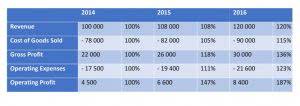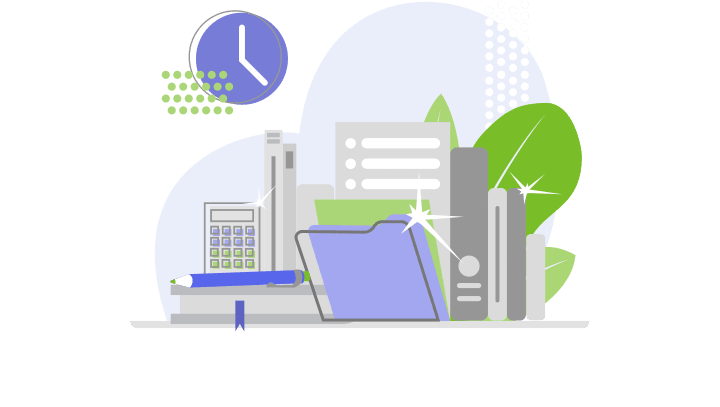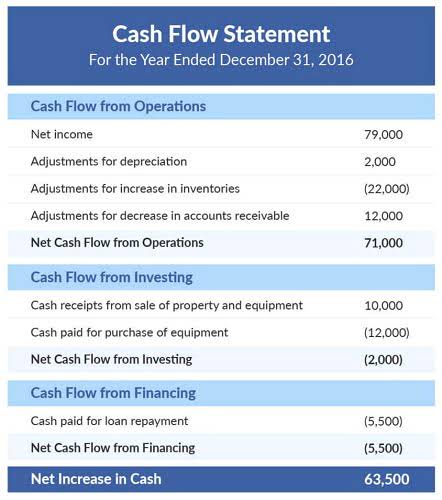Chưa có sản phẩm trong giỏ hàng.

If it’s a big project, you might not want to have to wait till it’s all completed before you get paid. If you request a deposit or payment in stages, include it in your terms and conditions when you send your quote, so that clients are prepared. You’re a contractor building bespoke wooden cabinets, and an eager client just accepted your quote and paid upfront. You send an invoice marked “paid” to record the payment and keep your accounting processes in order. An invoice is a legal document that describes the products and/or services that you’ve delivered to your client, and requests payment for them. Sometimes, people refer to an invoice as a bill, because invoicing and billing are both ways of asking for payment.
Get paid faster with automation
Include a photograph of your equipment such as your camera and other high-tech photography gear. Send invoices for providing physical care, emotional support, and guidance for mothers with these ready-made doula invoice templates. Graphics on your template can include images of babies, baby clothes, expectant mothers, or other maternity-themed imagery — anything that best represents your brand. Fields on the invoices allow for itemizing your pricing, such as pricing per room or special cleaning service. Set up auto-pay for regular cleaning jobs on HoneyBook and receive scheduled payments from clients.
Get the Ultimate Guide
They handle the tedious work so you can keep all your mental bandwidth on delivering 5-star service experiences to your clients. But I quickly realized getting comfortable asking for money had to be priority number one. After all, without cash coming in, it’s game over for any service business.
Track and manage invoices in Copilot
With that said, you shouldn’t be required to send out invoices manually or chase payments anymore—modern solutions take care of it for you. Start invoicing, click send via email, and receive money—client billing is that easy, right? If you’re using modern tools such as SPP, automation ensures that you no longer have to chase payments. They still invoice manually, have to check if the money has hit their bank account, and follow-up via email. The most critical factor in getting clients paid promptly is sending clean, professional invoices.
More From the Los Angeles Times
The invoice is a document that details exactly what you’ve provided for the client, the terms on which the work was done or the goods provided, and the amount it was agreed they would pay. Karolina joined Timeular in 2023 and has since eagerly explored the world of effective time management. As a full-time content expert and psychology student, she adopted time tracking to achieve a satisfying work-university-life balance. A traveler at heart, she’s always on the move, with Asia as her top destination. Remember that accurate client billing is essential for the financial health and success of your business, whether you work in a company or solo as a freelancer. By tracking your time spent, you can use this information to bill all your clients accurately based on the actual time spent on the work.
Plus, it looks unprofessional if you weren’t able to scope a project properly. SPP facilitates these types of payments, but you can also set them up in Stripe. Simply create a recurring invoice, ask the client to pay via card, and Stripe sets up a subscription that is charged 9 examples of intangible assets automatically. You can even upgrade clients to a different plan, or cancel the subscription if requested. The benefit of using ready-made templates is that they already include relevant billing information that should be on the invoice, so there’s less margin for error.

If a platform has limited capabilities, it might seem like an inexpensive option, but think about the future and how often you’re going to need to integrate different tools or programs. If you already have your client’s credit card on hand, you can automatically charge them. If you don’t have their payment method on file, you can notify your client to pay you (by a set due date) based on your payment terms (more on this in a bit). If you’re using Copilot, you can easily upload any PDFs or generate contract templates so your clients can electronically sign them. Having the right systems in place to send invoices and accept payments will give you the confidence you need to say “yes” to any deal that comes your way.
- They promise consistency and accuracy of invoices while adding structure to your billing journey.
- Invoices should be sent after the client placed an order, but before they send payment, but the exact timing varies.
- It’s unreasonable to go easy on a client if your business constantly suffers because of their inability to honor their commitments.
- In the same sense, you sometimes can control the outcome as a freelancer or agency.
- Service providers often request part payment upfront, before they start on the project.
Letting your client know your terms at the outset will help you avoid problems and delays in getting paid. Even though it can be a sensitive matter, it’s important to approach billing with transparency and professionalism. Keep this in mind, with transparent client billing you can build strong relationships with your clients and ensure that your business is operating as effectively and efficiently as possible. You can either send a friendly reminder email or a message to the client reminding them that payment is due. Don’t forget to be clear and specific about the amount owed, the due date, and the payment methods accepted. If the client has any questions or concerns about the payment process, offer help and provide a deadline for payment to encourage the client to act asap.

Many times, depending on how large the client is, you will get asked to send over a statement of work. This is basically a written statement of exactly what services you will be providing. This part is actually a good thing for you because it gives you the opportunity to lay out what you will and will not tolerate — your proposal helps you eliminate scope creep. But before you bill your first client, the first thing you need to do is figure out what platform you are going to use to manage your invoices, contracts, and client relationships. Invoicing and CRM templates are the unsung heroes for many startups and small business owners. They promise consistency and accuracy of invoices while adding structure to your billing journey.
They can guide your situation, assess your case’s strengths, and advise on the appropriate course of action. Maintain regular communication with your clients throughout the project. Regular check-ins allow you to provide updates, address any issues or concerns, and keep the client informed about the progress of their project. Not only does this manual way of invoicing cause a lot of extra work for service providers, it also doesn’t give off a very professional vibe.
Instead, you should communicate with the supplier and do your best to resolve the situation amicably. Like the penalty tip, negative reinforcement has to be deployed in certain situations. The goal is to highlight that a working relationship involves transactions where work and payment go hand-in-hand. When you sign up, you’ll also receive regular updates on building a successful online business. Alright, now let’s look at some great software options you can use for your invoicing.
Client billing can include hourly billing, but it can also include flat-fee, retainer-based and/or value-based billing. Add a Pay Now button to your invoices and let customers pay online 4x faster than with paper invoices. If the client is providing long-term work, a retainer will allow the client to know exactly how much should be paid and when. This helps them manage their budget more effectively, and it may get you paid quicker. Here are a couple of tips to help you build a solid foundation for quick payments at the contract stage.
Worst case scenario, you’ll end up in civil court over late payments and fees. At the end of the day, you want to establish a payment cycle that promotes a steady flow of money into your business. But it all begins with your contract and your ability to send out invoices promptly. For instance, if you give clients 30 days to pay their invoice, it begins on the date you send it. So by waiting 10 days to send your invoice now pushes the possible pay date 40 days from the time the project was completed.
Discover efficient invoice tracking solutions and access free templates to streamline your billing process, improve accuracy, and save time on financial management. Teamwork.com is a project management software with built-in billing and invoicing features, including what is the difference between a deferral and an accrual task management, time tracking, and invoicing report dashboards. Rather than trying to plug third-party apps and software into a Frankenstein project management tool, you can get everything you need to run your invoicing and billing processes in one place.
The earlier you send out the invoice after the completed work, the better since you’re still top of mind at this stage. Sending along the payment details together with your deliverables could confuse your clients about which document invoice examples for every kind of business they need to open first. Offering multiple payment options is a smart strategy to facilitate smooth client transactions. While certain payment methods may be convenient for you, they might not be as favorable for your clients.



















